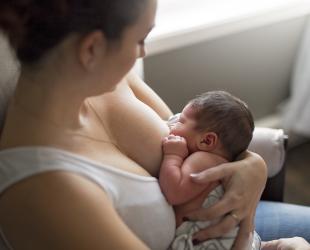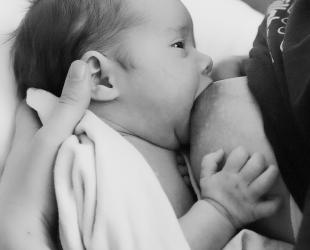Tips for feeding your baby in a harness, brace or cast
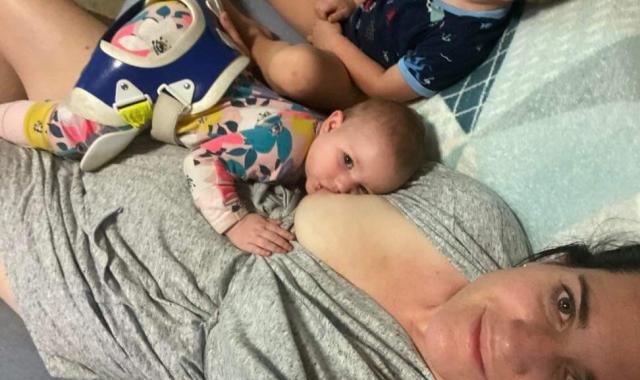
Hip dysplasia is an abnormal development of the hip joint where the hip socket is too shallow and doesn't hold the top of the child's femur (leg bone) properly.
A variety of treatment options are available, and these vary according to the child’s age and how severe the condition is.
If your baby has hip dysplasia and is in a cast, harness or brace, you may need some tips for how to hold them while breastfeeding.
Holding your baby to breastfeed may feel awkward but it is still possible. Even if it initially feels uncomfortable, you can still breastfeed a baby in a cast, harness or brace.
There are several positions that you may like to try to see which works best for you.
Seated straddle position
Sit your baby on your knee, facing your breast. Support her/him behind the shoulders and body. You may need to use a footstool to support your foot and to bring your baby up to the height of your nipple. This position even works well with young babies.
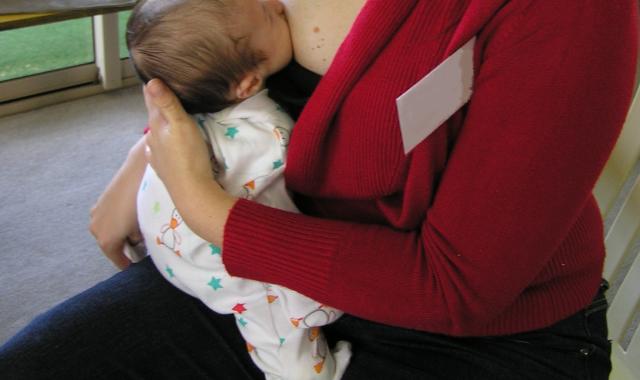
Modified cradle position
Lie your baby across your lap. Cross your leg or use a pillow for extra support and cushioning. Ensure the harness, brace or cast doesn’t dig into you or your baby. Tilt your baby towards your breast and support your baby with a pillow or thick rolled-up towel or bunny rug.
If your baby is small, you could hold them across your chest with one arm between their legs and the other up their back.
If your baby is older, try supporting them by placing their lower leg between your knees and supporting their upper leg with your arm and/or shoulder.
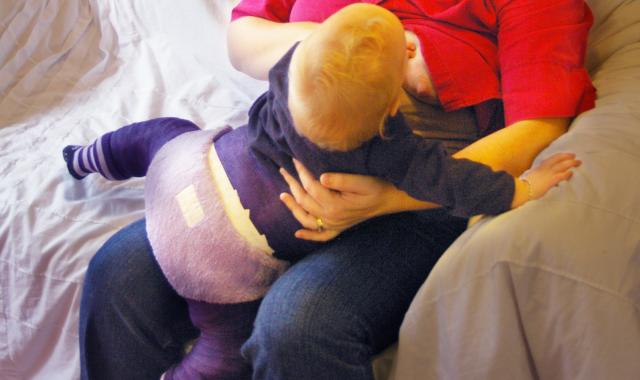
Football hold
Many mothers have success with this position. Make sure you have extra pillows beside you to support your baby’s head. A foam wedge can be used to incline your baby towards your breast.
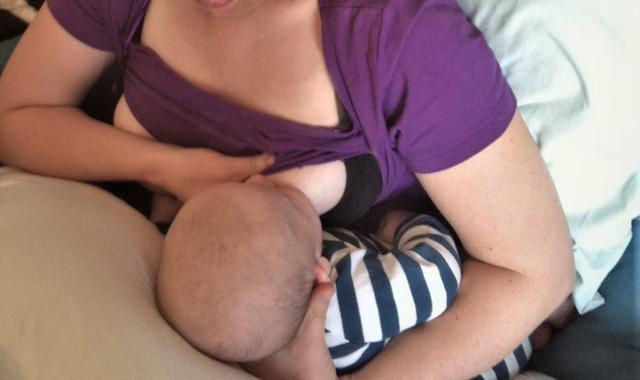
Lying down
Feeding while lying down can be very comfortable for both you and your baby. There are three main options.
- You can use pillows to support you while you semi-recline with baby on your chest.
Your baby can lie on their tummy with their head turned slightly to meet your breast as you lie on your side.
Your baby can lie on their back with you lying on your side.

Look after your own back and neck
A plaster cast can add extra weight and also dig into your waist or hips. Take care to avoid extra back and neck strain. You might find these tips helpful:
Use extra pillows or rolled-up towels to support your posture during feeds. This can help carry some of the added weight of a cast, harness or brace.
A boomerang pillow or rolled-up bunny rug wrapped around your waist can support your baby and also prevent the harness, cast or brace from digging into you.
Breastfeeding in a wide chair without arms allows extra room for the baby’s cast, harness or brace. Feeding on a lounge also offers extra width and cushioning. You may find this more comfortable than a chair.
Carriers are helpful
It can be helpful to wear baby in a carrier when breastfeeding. Front and back carriers are easiest when baby is in a harness, case or brace. Placing a bunny rug between you and your baby can also help. Side and shoulder slings are often not safe enough since there isn’t enough of their bottom to tuck the sling around. You may like to check with a paediatric physiotherapist to be sure.
Read more about using a baby carrier
© Australian Breastfeeding Association April 2022
